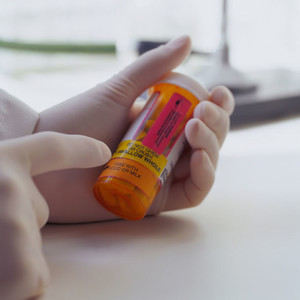Author Professor Roy G Beran, in a mini review, explains what generics are and what is meant by generic equivalence [1].
A ‘generic medication’ is a medicinal compound traded under its non-proprietary, approved ‘trade’ name, or is marketed with a different brand (proprietary) trade name [2]. Such drugs may be produced by a different pharmaceutical company, other than the original R & D manufacturer, claiming bioequivalence when compared with the originator compound upon which they are based [2]. The generic alternative medication aims to capitalize on the success of the original R & D medication, towards the end of its patent protection, essentially ‘copying’ it with a similar formulation, with identical active ingredient, but potentially having a different excipient or salt content. Generics can be produced and marketed much cheaper, at about 20%–90% of the price of the originator [3]. Some R & D companies also market their products, adopting a different ‘proprietary’ trade name, to suggest a generic alternative, as a way of maintaining market share [4].
Generics, unlike the originator medication, which required extensive animal and human clinical trials, only need to show bioequivalence in a relatively small number of health volunteers [5, 6], possibly <30 people but definitely <100. The efficacy and safety, of the generic medication, must respect defined boundaries with an identical amount of active ingredient(s), provided as an identical dosage, using a similar route of administration, with comparable drug availability [7]. Bioequivalence testing, on the ≤100 healthy volunteers, compares the generic and R & D medication, adopting a randomized sequence and appropriate washout period between them [8]. Both before and after such administration, plasma concentrations are evaluated at regular, predetermined intervals. The identical active moiety, in both the generic and originator parent compound, must be compared in the same individual, making each subject his/her own control [6].
Bioequivalence is determined by peak plasma concentration (Cmax) and area under the plasma concentration-time curve (AUC), demonstrating comparable rate and extent of absorption of the active ingredient [7, 9]. The US Food and Drug Administration (FDA) accepts bioequivalence if the ratio of AUCgeneric to AUCbranded and Cmax generic to Cmax branded, for the average of the sample of participants lies between 0.80%–1.25% of the originator medication, at the 90% confidence level for AUC and Cmax [7, 9]. This implies that the generic medication, shown to be 80% bioequivalent, is comparable to that which was 125% bioequivalent, despite >56% variation between the two results. Different generics are not directly compared against each other, ‘bioequivalence’ has been established with the originator medication.
Conflict of interest
The author of the research paper [1] declared that there was no conflict of interest.
Abstracted by Professor Roy G Beran, Neurology Department, Liverpool Hospital, Liverpool, Australia.
Related articles
Consequences of generics being favoured by healthcare providers
The cost of developing drugs and use of generics
Re-evaluation of the use of generics, especially when treating conditions such as epilepsy
| LATIN AMERICAN FORUM The new section of the ‘Latin American Forum’ on GaBI has been launched. The objective of this new section is to provide you with all the latest news and updates on developments of generic and biosimilar medicines in Latin America in Spanish. View last week’s headline article: Nomenclature of biologicals and biosimilars in Peru Browse the news in the Latin American Forum! Register to receive the GaBI Latin American Forum newsletter. Inform colleagues and friends of this new initiative. LATIN AMERICAN FORUM Se ha lanzado la nueva sección del ‘Foro Latinoamericano’ sobre GaBI. El objetivo de esta nueva sección es brindarle las últimas noticias y actualizaciones sobre desarrollos de medicamentos genéricos y biosimilares en América Latina en español. Vea el artículo principal de la semana pasada: Nomenclature of biologicals and biosimilars in Peru !Explore las noticias en el Foro Latinoamericano! Regístrese para recibir el boletín informativo GaBI Foro Latinoamericano. Informe a colegas y amigos sobre esta nueva iniciativa.
|
References
1. Beran RG. Generic substitution in patients whose illness has a narrow therapeutic index, such as epilepsy. APHE. 2020;1(2):1-5.
2. Dunne S, Shannon B, Dunne C, et al. A review of the differences and similarities between generic drugs and their originator counterparts, including economic benefits associated with usage of generic medicines, using Ireland as a case study. BMC Pharmacol Toxicol. 2013;14:1.
3. Baldwin C, Hienerth C, Hippel E. How user innovations become commercial products: a theoretical investigation and case study. Res Policy 2006;35(9):1291-313.
4. Meredith P. Bioequivalence and other unresolved issues in generic drug substitution. Clin Ther. 2003;25(11);2875-90.
5. European Medicines Agency. Guideline on the investigation of bioequivalence. Doc. Ref.: CPMP/EWP/QWP/1401/98 Rev. 1/ Corr ** 20 January 2010 [homepage on the Internet]. [cited 2022 Jun 10]. Available from: www.ema.europa.eu/en/documents/scientific-guideline/guideline-investigation-bioequivalence-rev1_en.pdf
6. Maliepaard M, Hekster YA, Kappelle A, et al. Requirements for generic anti-epileptic medicines: a regulatory perspective. J Neurol. 2009;256(12):1966-71.
7. Hill AM, Barber MJ, Gotham D. Estimated costs of production and potential prices for the WHO Essential Medicines List. BMJ Glob Health. 2018;3(1):e000571.
8. Verbeek R, Kanfer I, Walker RB. Generic substitution: the use of medicinal products containing different salts and implications for safety and efficacy. Eur J Pharm Sci. 2006;28(1-2):1-6.
9. Yu LX, Jiang W, Zhang X, et al. Novel bioequivalence approach for narrow therapeutic index drugs. Clin Pharmacol Ther. 2015;97(3):286-91.
Permission granted to reproduce for personal and non-commercial use only. All other reproduction, copy or reprinting of all or part of any ‘Content’ found on this website is strictly prohibited without the prior consent of the publisher. Contact the publisher to obtain permission before redistributing.
Copyright – Unless otherwise stated all contents of this website are © 2022 Pro Pharma Communications International. All Rights Reserved.








 0
0











Post your comment